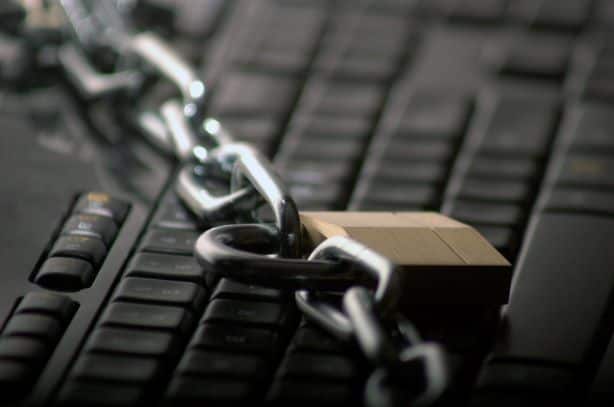Sometimes the only thing we want or need our keyboard to do is nothing. We don’t need all those extra functions, we don’t need any useful little shortcuts, we essentially just want a wrist rest.
Some keyboards come with a lock and unlock function built into the hardware. Almost all don’t, though. Sometimes our computer, or laptop, will even offer some kind of toggle to determine whether or not the keystrokes are inputted or ignored. Sometimes, though, we must rely on third-party software to help us achieve our goal of having a non-functioning keyboard.
All of the programs mentioned further on in the article have a very good reputation. That being said, if you aren’t comfortable downloading them that’s fine too. It just might severely limit your options. No matter why you want to lock or unlock your keyboard – or how easy it is to do so – this article will help you with every step!

Table of Contents
Why Might Someone Want to Lock their Keyboard?
So, earlier we joked about the only reason you might want to lock your keyboard is that you plan on using it as an arm wrest, but that’s not quite true.
Not in Use
If you are planning on using your computer for something but you don’t need the keyboard you very well may want to lock it just to make life easier, you no longer run the risk of accidentally hitting a certain command.
Stop Others From Messing With Your Work
Another good reason for locking your keyboard is safety. If you are in a public space, or a shared office workspace, or are in the library at college/school for example you are probably familiar with people messing around with your computer.
It shouldn’t happen, in some places, it’s even illegal for someone to mess with your computer, but it still happens. It’s a good idea to lock your screen behind a password to ensure things like this don’t happen. But, that’s not always realistic, sometimes we need to see what’s on our screen without having to interact with it.
That’s where locking the keyboard comes into play. If you are in high school or college I would strongly encourage you to learn how to lock your keyboard because your friends can and will mess with your work.
I’m sure we have all experienced someone trying to play a joke on us goofing around with our computer only for them to end up deleting something, breaking something, and causing you a whole lot of headaches.
While Cleaning the Keyboard
Another good reason to lock your keyboard is when you are cleaning it. Personally, I end up forgetting to lock my keyboard while I clean it resulting in a string of letters and numbers or commands. You end up with something similar to holding your hand on the keyboard of a piano and pulling it all the way across. It’s just a mess.
If you are using compressed air on your keyboard to help clean it, it’s usually a good idea to turn off the computer first, but it’s not one hundred percent necessary if you can’t be bothered. If you would rather just lock your keyboard while you do it, that’s fine too.
The reason you might want to lock it is that the air can trigger keystrokes by accident. This isn’t a huge problem but it is a little annoying.
Locking your Keyboard Mechanically
Sometimes locking your keyboard is as simple as flicking a switch on your keyboards frame. If you are unsure whether or not your keyboard allows you to toggle lock vs unlocked you can start by checking the owner’s manual.
If that’s not an option or you can’t find any reference to that, there are a few places you can look. First, check along the sides of the frame. There will often be a physical switch or button that indicates it locks or unlocks the keyboard. This is far more common in USB keyboards and very, very, rare when it comes to laptop keyboards.
If there isn’t a physical switch there will sometimes by a keyboard lock key itself, similar to how you have caps lock. The gimmick here is that you aren’t technically locking the whole keyboard, as one key must always be unlocked. Duh, how else would you unlock the rest of them?
This isn’t quite the same, but if you are using a wireless keyboard you can simply switch its Bluetooth connection on and off.
Keyboard Lock Command
Keyboard input is almost always interpreted on the computer’s side of the exchange. Keystrokes are registered on the computer and inputted on the page. In some rare cases, the keystrokes are registered and stored on the keyboard itself and then they are sent to the computer to be inputted. The exchange is almost instant, so you likely have no idea which way your specific keyboard works.
The reason it’s important to understand this is that blocking your keyboard from sending the data to your computer isn’t the only way to stop the input being registered. Or more specifically, being outputted.
When you use a keyboard lock command all your doing is telling your computer to ignore the information coming from the keyboard. Except, when you use a few very specific commands. These commands will always be a string of keys rather than just one. Like Control + C for example. Or, more importantly, the command to lock or unlock the keyboard.
Depending on what computer or OS you are working with the command may vary. By default, you will probably find it’s either one of Control + Alt + L or the windows key + L. The exact command can usually be changed.
You may also be able to lock the keyboard by right-clicking the desktop. Similar to how you can lock the screen or even the mouse. It’s important that you understand not every computer or OS offers this ability.
Keyboard Lock Third-party Software
Sometimes, we don’t have the ability to lock the keyboard at all. This is a little inconvenient but it’s not a huge problem. There are tons of great programs you can download, I would recommend one that’s called keyboard locker.
It’s very simple to use and very easy to find online. It actually works off the same commands, Control + Alt + L, as the inbuilt locker does. Just as the inbuilt locker still responds to certain commands, so does the keyboard locker.
The great thing about keyboard locker is that you can set specific conditions that it unlocks, for example, you could turn off all command sequences except Control + Alt + L. You could even change the exit command so that others don’t know how to use it.
Another common setting is changing the unlock command to typing the word unlock, you have to assume you’ve typed it correctly as there is no visual cue that you’ve even started typing.
There is also a keyboard symbol located on your taskbar that can be left-clicked to toggle the keyboard being locked or unlocked. Or, you can write click to play with the settings.
There are no major problems that people tend to have with this program other than the fact when you use the type “unlock” setting there can often be a few seconds of delay before your keyboard starts responding.
My Keyboard Won’t Unlock
Sometimes, when we lock the keyboard we can have a bit of trouble unlocking it. Which is obviously less than ideal. Before you panic, I would encourage you to check that you have disabled both locks.
Sometimes people lock the keyboard from the keyboard itself, and then again from the computer either with the inbuilt locking system or a third party program like keyboard locker. They disable one lock but forget to disable the other, and then everything’s a little confused.
The same thing can happen if you physically lock the keyboard but then try to unlock it from the computer, ultimately locking the computer and then going back to the keyboard to unlock it and wondering why it still won’t work.
Disable all the keyboard lock options. If that still doesn’t work, I would suggest forcing your computer to restart. Yes, even with this, have you tried turning it off and on again is the right idea. If the problem was the computer side, then this will solve it. If it’s not, then it’s a problem with the keyboard itself.
Conclusion
Hopefully, this article has helped you somewhat. Especially if you had no idea previously whether or not locking your keyboard was even a problem.
Personally, I like keyboard locker over a physical switch or an inbuilt program. It’s easy to use and has a lot of other helpful commands available to you. It’s more than just a keyboard locker, but that is where it excels.
If you are unsure about using some third-party software you’ve never heard of that’s fine, but, they are partnered with Microsoft in some capacity so there should be at least a little credibility there in your eyes.
Good luck with your keyboard locker, remember, if it gets stuck don’t panic – the fix is super easy.
